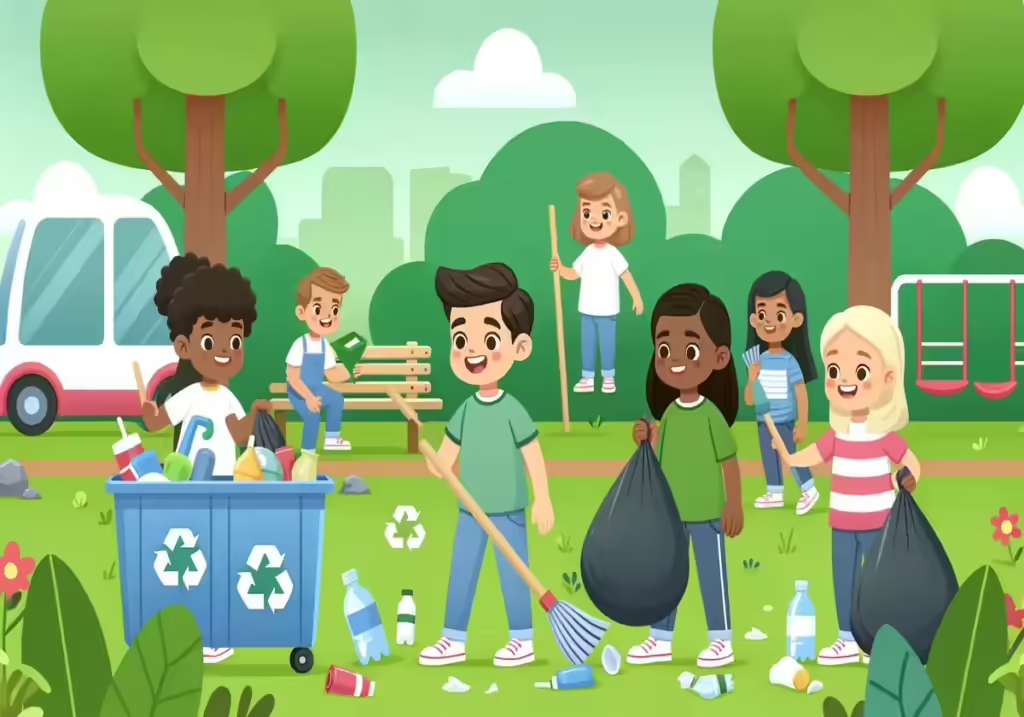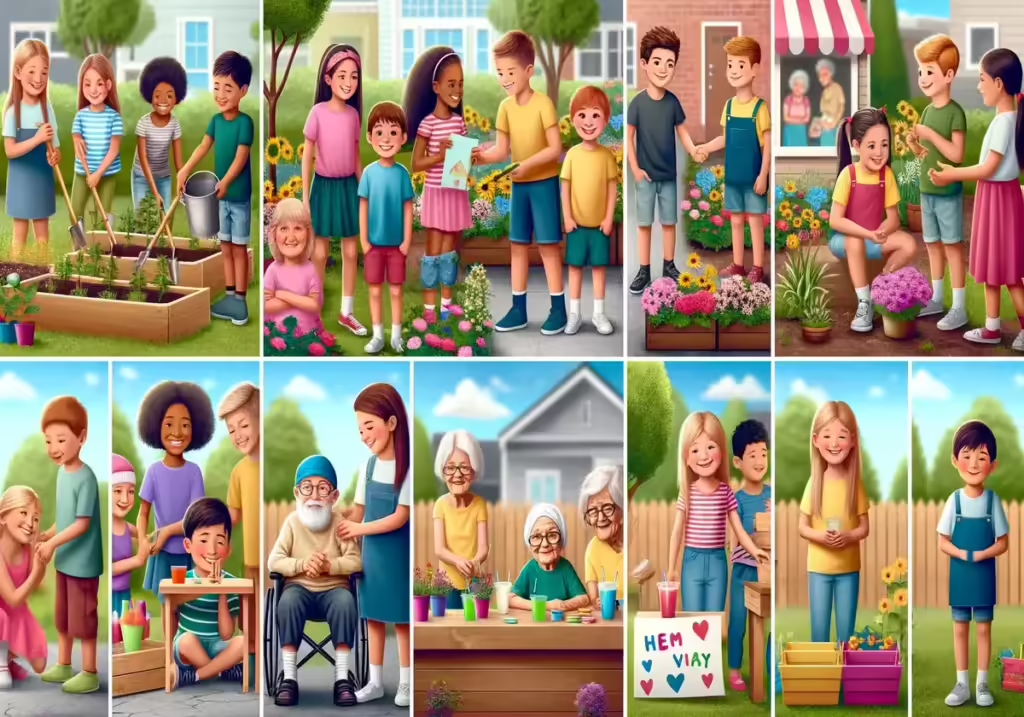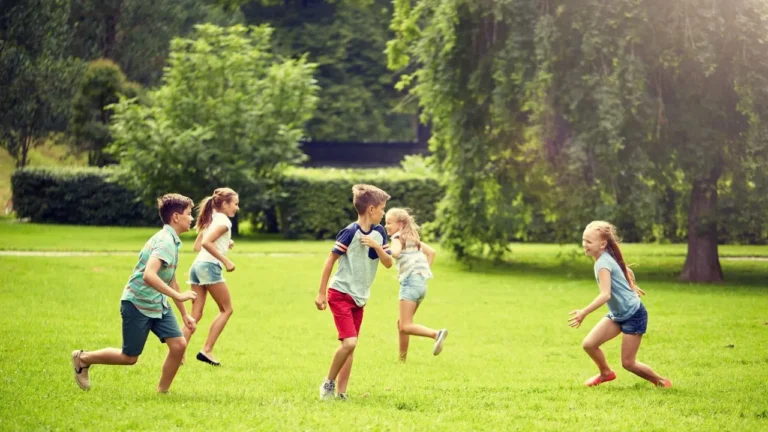Promoting Kindness: 8 Epic Acts of Kindness for Kids
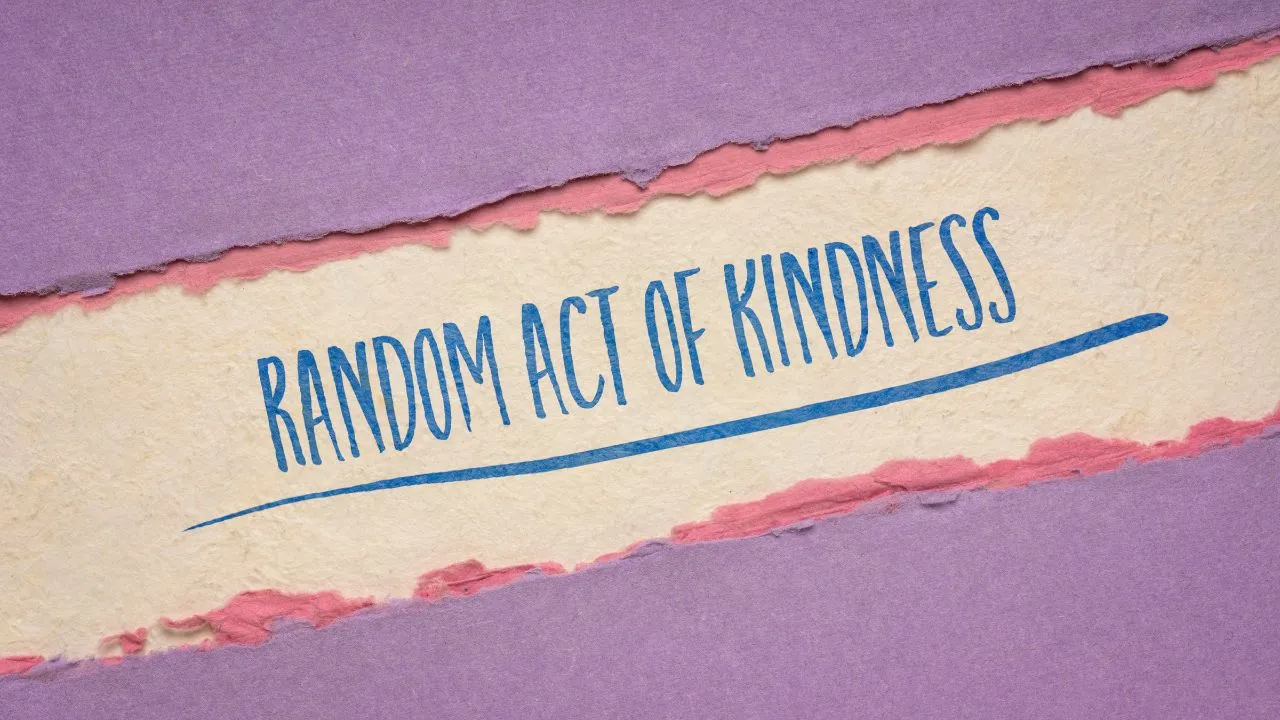
Acts of Kindness for Kids can profoundly impact the world around us. Imagine a world where every small gesture by a child creates a ripple of joy and compassion. Teaching kindness to children isn’t just about helping others; it’s about nurturing empathy, generosity, and mental resilience.
From sharing a smile with a stranger to crafting heartfelt notes, these simple acts transform young minds and hearts. Promoting kindness in children fosters a community spirit and a sense of belonging.
As we guide our little ones through these meaningful gestures, we equip them with the tools to make a lasting difference. Dive into these eight inspiring acts and watch kindness blossom in unexpected ways.
Here Are Eight Inspiring Acts Of Kindness For Kids To Try Out:
Random acts of kindness kids: Encourage your child to perform small acts of kindness throughout the day. This could be anything from helping a classmate with a difficult task to sharing their favorite book with a friend. These gestures may seem small, but they can significantly brighten someone’s day.
Donate items: Go through your child’s closet with them and choose gently used clothing items that no longer fit or get used. Take these items to a local shelter or donation center together. This will allow them to see firsthand how their generosity can provide essential items for those in need.
Kids volunteer opportunities: Teenagers looking to make an impact in their community should consider volunteering. This could be at local fire stations, animal shelters, or even starting a fundraising initiative for causes they care about. The funds raised can then be donated to charities that align with their interests.
Spreading cheer: Encourage your child to spread cheer by leaving positive notes around town or making homemade cards for family members who live far away. This act of kindness will not only brighten someone’s day but also boost their self-esteem by seeing the positive impact of their actions.
Expressing gratitude: Teach children the importance of expressing gratitude. Encourage them to write thank-you notes after receiving gifts or kind gestures from others. This practice will help them appreciate the kindness of others, fostering positive perceptions and stronger social connections.
Kindness crafts for children: Use natural materials like flowers, leaves, and twigs to create beautiful crafts. These could be flower vases or painted rocks, which could be gifted to friends or neighbors. This activity not only teaches kids about the environment but also encourages compassion and respect toward living things.
Homemade gifts: Encourage your child to create homemade gifts like photo frames or bookmarks. This activity shows the recipient that thought and effort were put into creating something unique and special for them.
Positive perceptions: Encourage children to see the positive in others, especially when someone might be struggling or going through a tough time. This practice can help build mental strength and resilience, fostering a more compassionate and supportive community.
These are just a few examples of acts of kindness for kids to try out, but countless others are out there waiting to be discovered. By incorporating gratitude and generosity into our parenting, we can help our children grow into kind, empathetic adults motivated to learn and make a difference in the world around them.
Understanding The Process: How Children Develop Kindness
From a young age, children are fascinated by the world around them. They are wired to learn and explore, which makes them perfect candidates for developing kindness. As parents or caregivers, we can create opportunities that help foster prosocial behavior and emotional development in young children.
One way to kick start this process is by introducing children to nature crafts. This not only teaches kids about the environment but also encourages compassion and respect toward living things. Be it a leaf mandala or creating a birdhouse from scratch, the act of being kind to nature sets the foundation for developing kindness towards others.
Another great way for parents to encourage kids to be kind is by involving their kids in helping out with chores around the house. Simple tasks like setting the table or picking up toys after playtime instill qualities such as generosity, good etiquette and manners, and independence in children from an early age.
As children get older and become teenagers, they start looking outside their homes for ways to be kind too. One popular option is volunteering at places like nursing homes or domestic violence shelters where acts of kindness can make a huge difference in someone’s life.
Other options include baking cookies for firefighters or writing thank-you notes to police officers or healthcare providers – both of which promote emotional intelligence and positive perceptions of service professionals.
It’s important to note that each child develops kindness differently depending on many factors like personality types, experiences, parenting style, etc., but as parents providing opportunities, encouragement, and praise at every step can go a long way in creating well-rounded empathetic human beings who genuinely care about others’ welfare.
Making A Difference: Donating Items To Those In Need
Donating items to those in need is an excellent way for kids to learn the value of giving back. It teaches them compassion and helps them understand that they can make a real difference in their community. There are many ways for kids to get involved with donating items, from donating toys they no longer use to donating clothes or food.
One way for kids to donate items is by organizing a donation drive. They can work with local leaders or organizations like a homeless shelter or an animal shelter to find out what specific items are needed.
For example, a kid’s group could organize a baby item donation drive around Thanksgiving and donate the collected items to a healthcare provider or nursing home that has newborns. Another way for kids to donate is by visiting local fire stations, police departments, or healthcare providers and asking how they can help.
Kids can bring in thank you notes or crafts they made themselves as tokens of appreciation for these community helpers who do so much every day. Kids can participate in simple acts of kindness through donations like donating books and toys at playgrounds where other children play.
These small acts go a long way in promoting prosocial behavior and teaching kindness from an early age. By donating items that aren’t being used anymore, children learn the importance of not wasting things while also helping others who need them.
Overall, incorporating donations into family life teaches children valuable lessons about empathy and caring for others while making them more aware of the problems within their community. By fostering kind behavior at home first, independent teens become future leaders with strong values of giving back.
Expressing Gratitude: The Art Of Writing Thank You Notes
When someone does something nice for us, it’s important to show our appreciation and express gratitude. One way kids can do this is by writing thank-you notes. Not only does it make the recipient feel good, but it also teaches children about the importance of acknowledging kindness.
Kids can write thank-you notes for a variety of reasons. Maybe someone gave them a birthday present or helped them with a project at school. Or perhaps they just want to say thank you to a friend who has been there for them. Whatever the reason, writing a thank you note is a great way to show appreciation.
To make it more fun, kids can get creative with their thank-you notes. They can use colorful paper or draw pictures to accompany their message. They can also write personalized messages that highlight how much they appreciate the person and their actions.
Teaching kids how to write thoughtful and heartfelt messages will not only make others feel good but will also strengthen their self-esteem through positive perceptions from others. Another idea is for kids to write thank you notes as part of a community service project!
At home, ask kids what motivates them in life and brainstorm ideas on how those passions could create an opportunity for volunteering efforts in your community such as setting up lemonade stands or making vegetable gardens at homeless shelters!
Whether they’re making baby items for domestic violence shelters or dog training supplies for rescue organizations, there are countless ways that children can make a positive impact in their local communities while also learning about prosocial behavior from local leaders who work hard every day to help people in need.
Writing thank you notes not only helps teach kindness but it also demonstrates mental strength when one takes time out of their busy day to acknowledge others’ kindness towards them!
Teach Kids Empathy For Others Through Acts Of Kindness
Helping Hands: Performing Chores For Others
One of the easiest ways to show kindness is by offering to help others with their chores. This can be done at home or in the community. At home, kids can offer to vacuum the living room, clean up the kitchen after dinner, or take out the trash. These tasks might be simple and mundane, but they can make a big difference in easing someone’s burden.
Outside of the home, kids can offer their services to neighbors or local organizations. They could rake leaves for an elderly neighbor or clean up a nearby park alongside other community members. Another great option would be volunteering at a homeless shelter or food bank.
These places are always in need of helping hands and it offers children an opportunity to see firsthand how their small actions can have a big impact on others.
It’s important to note that performing chores for others should not be seen as a punishment or obligation – it’s an opportunity to show kindness and empathy towards others. By approaching these tasks with enthusiasm and generosity, kids will learn that giving back feels good and can inspire them to continue seeking out opportunities for prosocial behavior.
Overall, encouraging children to perform chores for others is an excellent way to promote generosity and empathy towards those around them while also teaching them important life skills like responsibility and work ethic.
Fostering Compassion: Caring For Animals
Another way to inspire kids to be kind is by encouraging them to care for animals. It’s been proven that children who learn how to take care of animals are more likely to exhibit prosocial behavior towards their peers, which can lead to a more positive atmosphere in school and on the playground.
Furthermore, caring for animals is a great way for kids to connect with nature and develop empathy. One way kids can get involved in caring for animals is by volunteering at a local shelter or rescue organization. This not only helps the animals but also teaches children about responsibility, compassion, and self-esteem.
They could walk dogs, play with cats, help staff clean enclosures, or feed the animals. For younger children who may not be able to volunteer at a shelter yet, there are still plenty of ways they can show kindness towards animals. For example, they could put out birdseed in the backyard or make birdhouses or feeders as part of nature crafts projects.
Children could also help pick up litter outside their homes that might harm local wildlife. Teaching children good etiquette and manners around pets will also go a long way in fostering an appreciation for all creatures big and small.
Caring for animals goes beyond just domestic pets like cats and dogs; it can also include making donations toward wildlife conservation efforts. Many organizations allow people of all ages to donate directly online via their websites to protect these beautiful creatures from harm.
Fostering compassion in children through caring for animals has numerous benefits both personally as well as socially while teaching kids an important lesson in gratitude and empathy.
By encouraging kind acts towards our animal friends through random acts of kindness kids such as donating items or volunteering, we are helping shape the future leaders of tomorrow who will hopefully continue spreading cheer wherever they go!
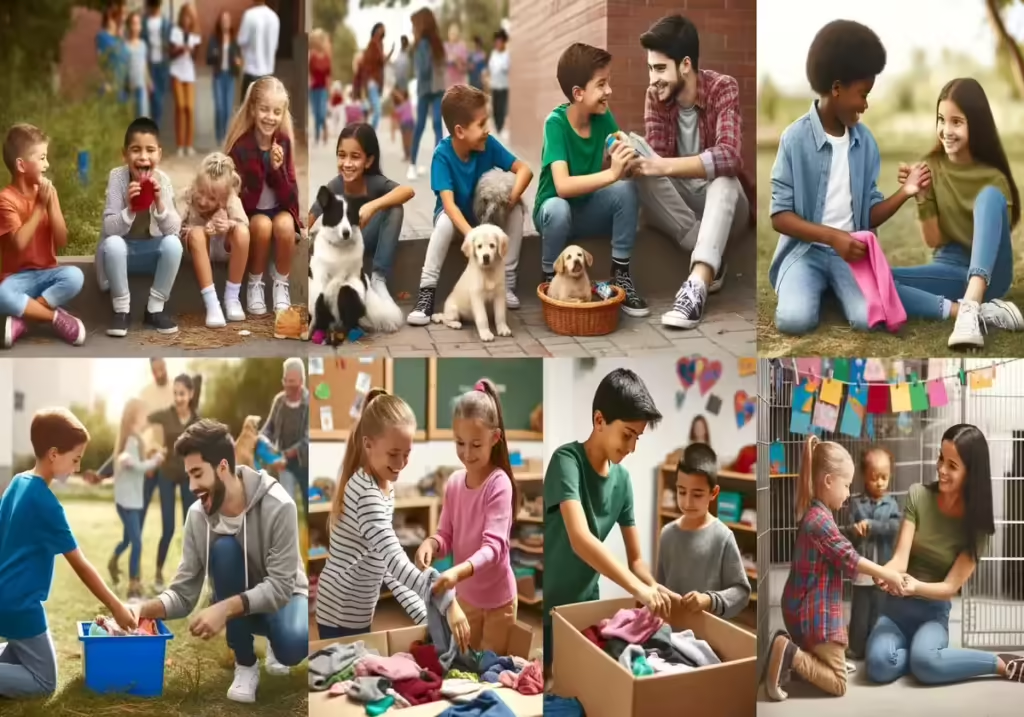
Creative Expressions: Crafting A Personal Gift For Someone
Homemade gifts are a great way to teach kids the importance of caring for others. By taking the time to create something special, children learn how much it means to give from the heart. There are many ways that kids can get creative with their gifts, whether it’s drawing a picture or making a piece of jewelry.
When it comes to crafting homemade gifts for others, the possibilities are endless. Kids can create personalized cards, paint pictures, sew stuffed animals, or knit hats and scarves. Not only do these gifts show generosity, but they also demonstrate emotional intelligence and empathy toward the recipient.
One great way to spread cheer through homemade gifts is by creating care packages for those in need. Whether it’s donating items to an animal shelter or collecting toys and clothes for children in low-income communities, kids can take part in fundraising efforts and contribute positively within their community.
For example, they could team up with local firefighters or police officers who collect donations throughout the year. Encouraging kids to create homemade gifts is an excellent way of promoting kindness in children and generosity toward others while developing emotional intelligence skills at an early age.
This activity allows them to express gratitude and generosity through various creative outlets while spreading joy within their community. Overall, offering guidance on these small acts of kindness will undoubtedly have a positive impact on both children and society as a whole.
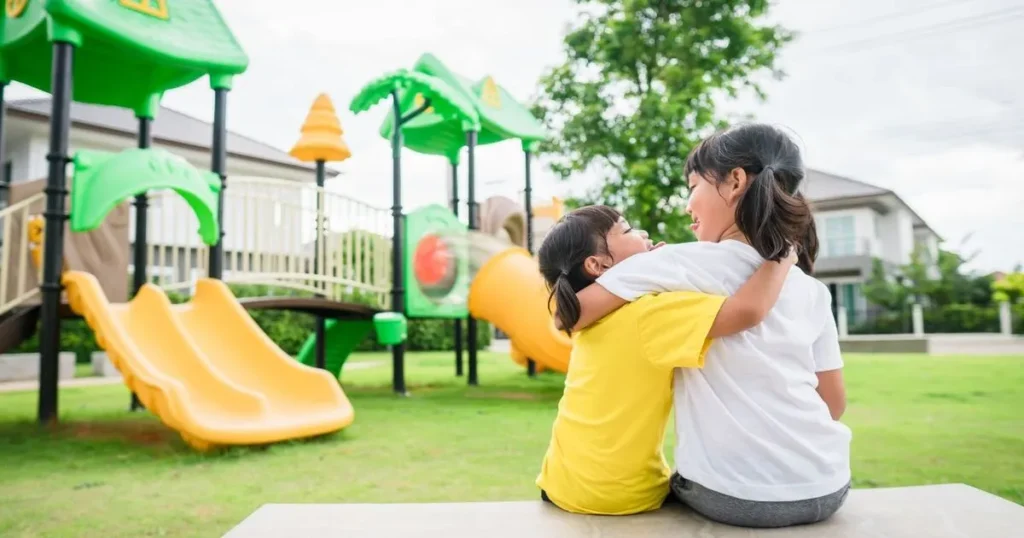
Teach Kids Compassion Through Acts Of Kindness
The Power Of Praise: Giving Genuine Compliments
One of the most powerful and effective ways to spread kindness is by giving genuine compliments to others. Praising someone not only makes them feel appreciated and valued but it also cultivates a positive culture around us.
It doesn’t cost anything, it’s easy and anyone can do it. You just have to look for something nice to say about someone and say it. You can start with your family, friends, teachers, coaches, or any other person you come across in your daily life.
For instance, you can compliment your sibling on their artwork or good grades in school, thank your healthcare provider for treating you with empathy and care, or thank the local leaders for their service to the community. Of course, always remember to use good etiquette and manners while doing so.
Compliments can also be given to those who serve our community selflessly like police officers or firefighters. If you visit a homeless shelter or a soup kitchen as part of volunteering, take some time to appreciate the workers there who are making a difference in people’s lives every day.
Bringing positivity into these environments is crucial as many times people are dealing with challenging situations. Additionally, if you notice someone being bullied or experiencing violence at school or anywhere else, complimenting them on their courage and strength can go a long way in making them feel better about themselves.
Giving genuine compliments is a simple yet powerful way of spreading kindness around us. It cultivates prosocial behavior among individuals and nurtures positive perceptions towards ourselves and each other. So go ahead and make someone’s day by saying something nice about them today!
Spreading Joy: Ways To Cheer Up Others
When we perform acts of kindness, not only do they benefit others, but they also bring joy and happiness to our own lives. Whether you’re feeling down, or just looking for a way to brighten up someone else’s day, spreading cheer can be a simple yet effective solution.
One easy way to spread joy is by giving compliments. When we take the time to notice something positive about someone and express it genuinely, it can make their day. It could be as simple as complimenting their outfit or hairstyle or expressing gratitude for something they did for you.
As Thanksgiving approaches, consider making a conscious effort each day to give at least one heartfelt compliment. Another way to spread cheer is through handmade gifts or nature crafts. Creating something with your own hands not only shows effort and creativity but also adds a personal touch that can make someone feel special.
Whether it’s a painting, scarf, or homemade soap – taking the time and care to create something unique for someone else can bring feelings of warmth and joy. Volunteering can be one of the most impactful ways to spread cheer. There are countless volunteer opportunities available within your community that allow you to give back in meaningful ways.
Consider volunteering at a healthcare facility where you can bring some light into patients’ days by spending time talking with them or playing games; donating items like toys and books to domestic violence shelters; setting up a lemonade stand with proceeds going towards charity; or simply spending time cleaning up your local playgrounds.
Volunteering not only spreads cheer but also helps instill empathy and good etiquette/manners in kids. Spreading joy doesn’t have to require much effort or money — there are so many little things kids (and adults) can do every day that will make someone’s day brighter and happier!
Final Thoughts
At Trending Kid Stuff, we believe that acts of kindness should be a part of every child’s upbringing. By fostering compassion and empathy in our children, we can help create a more positive and generous society. We hope this article has given you some ideas to inspire your acts of kindness with your kids.
One thing we want to emphasize is that acts of kindness don’t have to be grand gestures. Sometimes, the simplest acts can brighten someone’s day. A kind word or genuine compliment can make all the difference in someone’s mood. Encourage your kids to look for opportunities to spread joy in their everyday interactions with family, friends, and even strangers.
We also encourage you to get involved in your local community as a family. There are often opportunities to volunteer at local homeless shelters or nursing homes, organize a lemonade stand for charity, or donate items to those in need.
These experiences can teach kids about gratitude and generosity while also helping them develop emotional intelligence and positive perceptions of those who may be different from them. Plus, it feels good to give back!
Teaching kindness to children is beneficial not only to the child but also to society as a whole. Empathy is an essential component of kindness, and it can be fostered through various acts of compassion like volunteering or simply performing random acts of kindness.
Kids who are taught kindness from an early age grow up with a strong sense of self-esteem and mental strength, which motivates them to learn and excel in school. Moreover, children who are consistently exposed to acts of kindness will also become more generous adults who care for animals, donate baby items, or even train dogs for police officers.
Not only will they feel good about themselves but they will also contribute positively in their communities through local leadership roles. Let’s not forget the power of showing gratitude through thank-you notes or simple compliments. These small gestures can go a long way in brightening someone’s day and spreading joy.
By teaching our children the importance of being kind and compassionate towards others, we can create a world where positive values reign supreme.
So go ahead and encourage your child to make gifts or nature crafts for those in need, set up a lemonade stand to raise funds for charity, or simply perform small acts of kindness every day. The possibilities are endless when it comes to spreading love and compassion!

